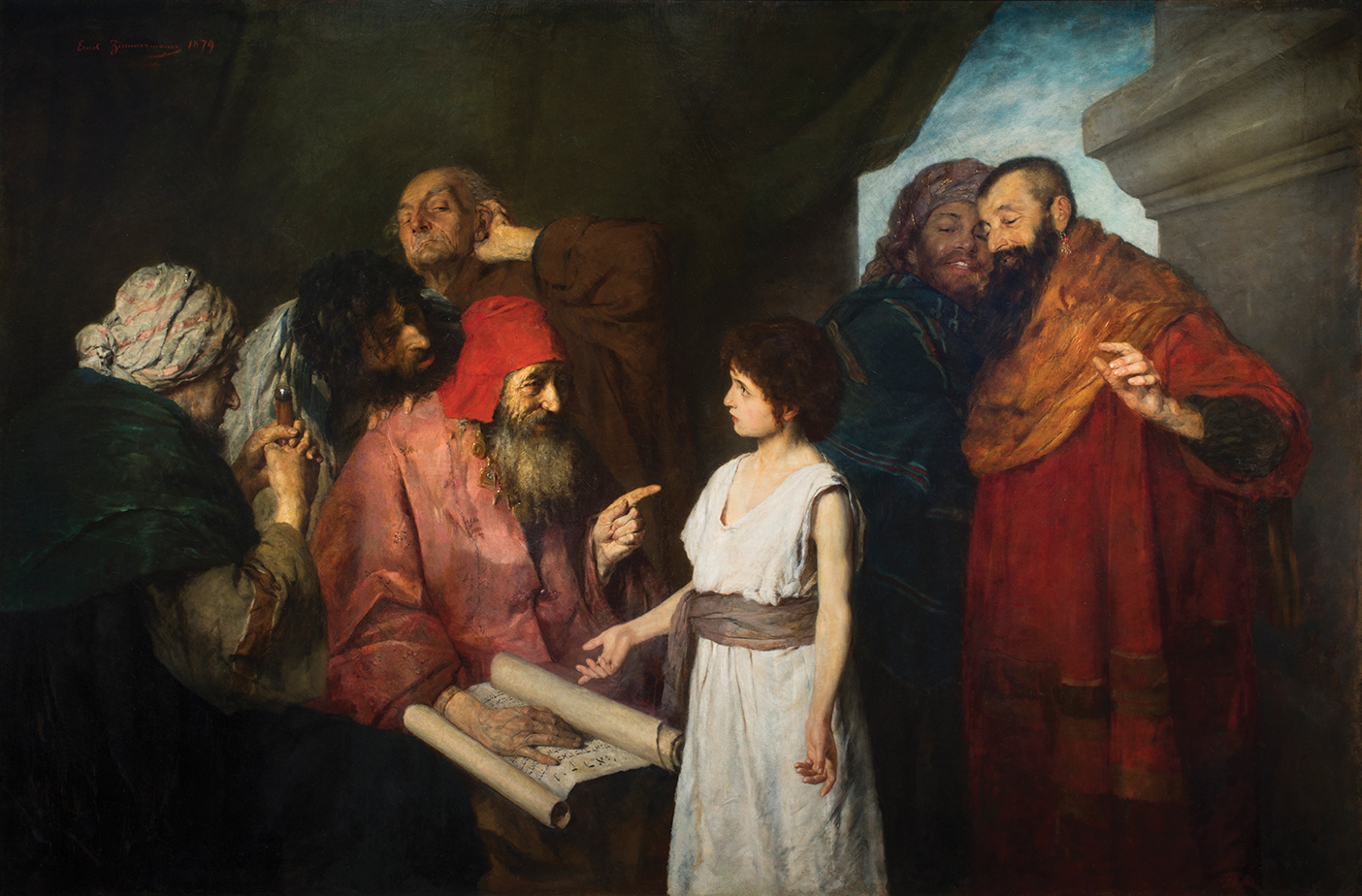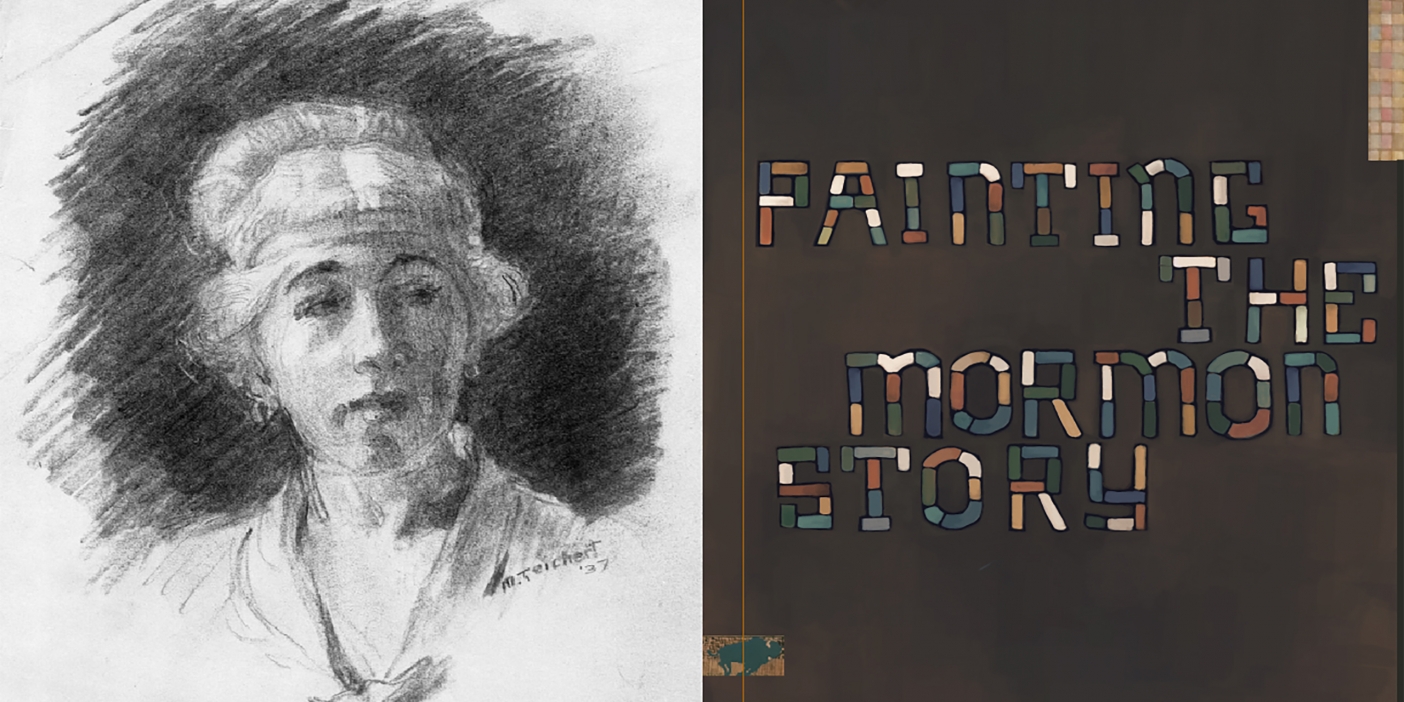Divine providence brought Ernst Zimmermann’s Christ in the Temple to the BYU Museum of Art’s (MOA) permanent collection, says director Mark A. Magleby (BA ’89).
After being considered lost for most of its existence, the painting emerged on the market just as the MOA prepared a new exhibit contemplating the Savior. Now, thanks to a generous donor, the MOA’s newest religious acquisition is a focal point of not only the exhibit To Magnify the Lord: Six Centuries of Art and Devotion, on display until 2019, but of the museum’s entire collection.
The painting was highly praised at its debut at the 1879 International Art Exhibition. The scene is a common motif in art history, yet this is “a painting that is far richer than all the other versions,” says Magleby. Below are highlights from the docent tour with Magleby and MOA religious-art curator Ashlee Whitaker (BA ’05, MA ’08).

Faces: Where artists often employed adults, even women, as sitters for the boy Savior, Whitaker and Magleby see here 12-year-old authenticity.
Magleby says the psychology, the reaction, of each figure in the realistic renderings of these faces is unprecedented. Whitaker notes “the rabbi’s eye—that wrinkle. Sometimes I have to stop myself from touching it, it’s so tactile.”
Scale: This work could have been painted much larger, says Magleby. “But the artist chose to keep all these figures on human scale, in the immediate proximity of us, that we are made witnesses.”
“It lends itself to asking,” adds Whitaker, “‘Where would I stand? Where do I stand right now in reference to the Christ?’”
Hand Gestures: “If you illuminated only the hands, it’s an incredible circuit of gestures,” says Magleby.
“The man to the far right, his fingers together—it seems like a diminishing thing, . . . ‘Pipsqueak,’” Magleby imagines. Follow the arc of gestures to the left, down, and back around. Jesus, with His hands open, stops the arc, “witnessing of truths that His hands will eventually be inscribed with.”
Clothing: “Zimmermann is attentive to drapery,” says Whitaker, who points out the cynic in velvet, the rabbi in silk. Most portrayals of Jesus dress Him in white linen, but Zimmermann breaks from that formula with “this robe of wooly white as He witnesses to being the Lamb of God, to being the sacrifice.”
Subtleties Not to Miss:
1. On the scroll, the artist has painted, in Hebrew, the first lines of Leviticus, which introduces the law of sacrifice, calling for a lamb without blemish, offered voluntarily.
2. The hand of the rabbi resting on the scroll “is just fantastically rendered,” says Whitaker.
3. The hand of the wild-looking man on the shoulder of the rabbi, “just so eager,”” she says.
4. “Look at what [Zimmermann] has chosen not to emphasize,” says Magleby, noting the simplicity of the architecture. The focus is on the interior figures, while the two figures on the right move toward the exit—into the world—correlating with the skepticism on their faces.












